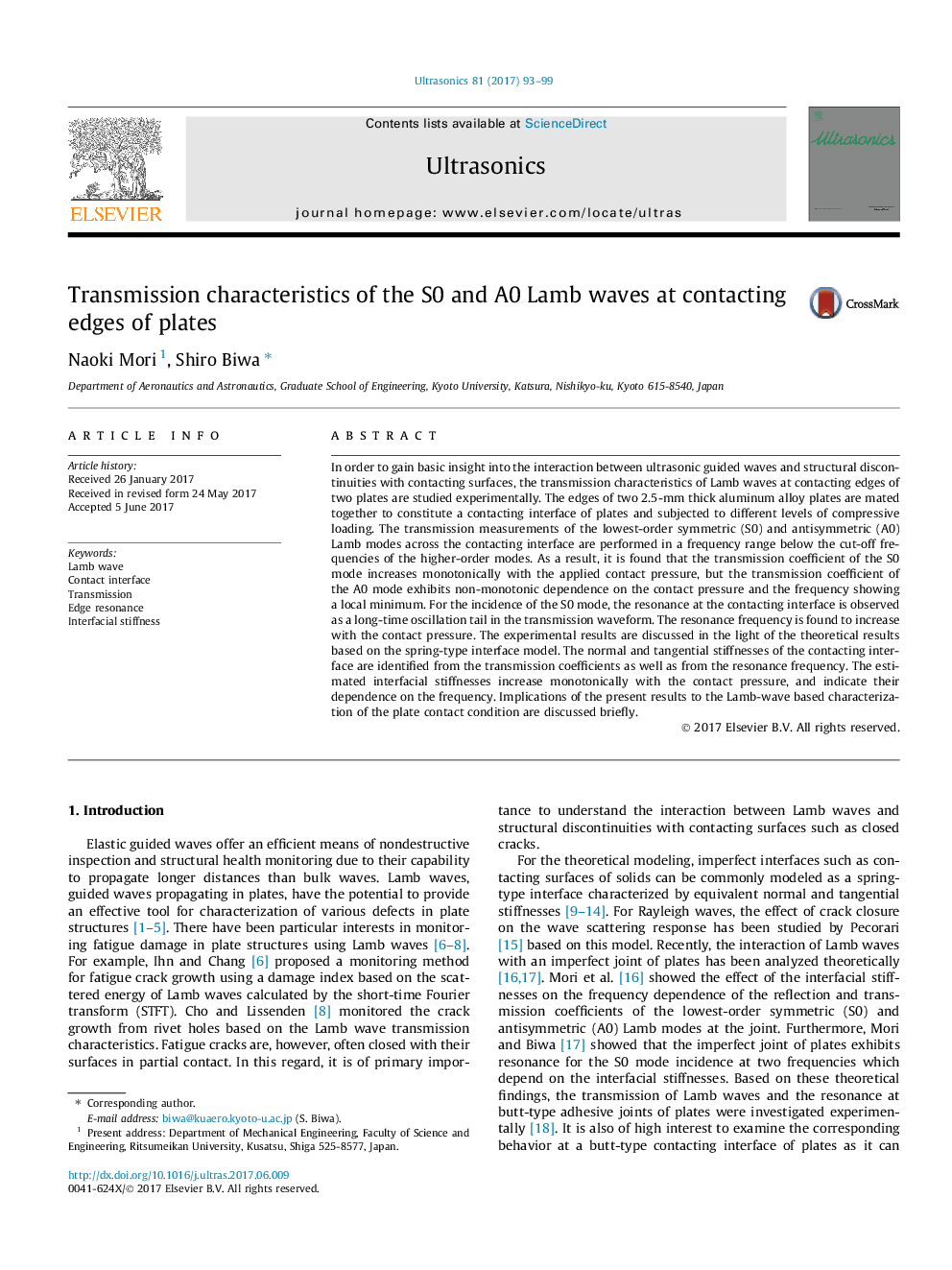| Article ID | Journal | Published Year | Pages | File Type |
|---|---|---|---|---|
| 5485399 | Ultrasonics | 2017 | 7 Pages |
Abstract
In order to gain basic insight into the interaction between ultrasonic guided waves and structural discontinuities with contacting surfaces, the transmission characteristics of Lamb waves at contacting edges of two plates are studied experimentally. The edges of two 2.5-mm thick aluminum alloy plates are mated together to constitute a contacting interface of plates and subjected to different levels of compressive loading. The transmission measurements of the lowest-order symmetric (S0) and antisymmetric (A0) Lamb modes across the contacting interface are performed in a frequency range below the cut-off frequencies of the higher-order modes. As a result, it is found that the transmission coefficient of the S0 mode increases monotonically with the applied contact pressure, but the transmission coefficient of the A0 mode exhibits non-monotonic dependence on the contact pressure and the frequency showing a local minimum. For the incidence of the S0 mode, the resonance at the contacting interface is observed as a long-time oscillation tail in the transmission waveform. The resonance frequency is found to increase with the contact pressure. The experimental results are discussed in the light of the theoretical results based on the spring-type interface model. The normal and tangential stiffnesses of the contacting interface are identified from the transmission coefficients as well as from the resonance frequency. The estimated interfacial stiffnesses increase monotonically with the contact pressure, and indicate their dependence on the frequency. Implications of the present results to the Lamb-wave based characterization of the plate contact condition are discussed briefly.
Related Topics
Physical Sciences and Engineering
Physics and Astronomy
Acoustics and Ultrasonics
Authors
Naoki Mori, Shiro Biwa,
